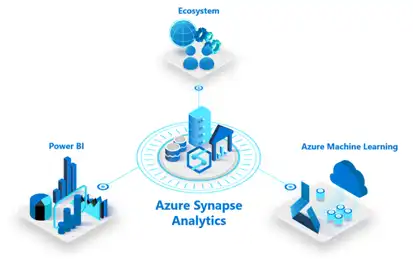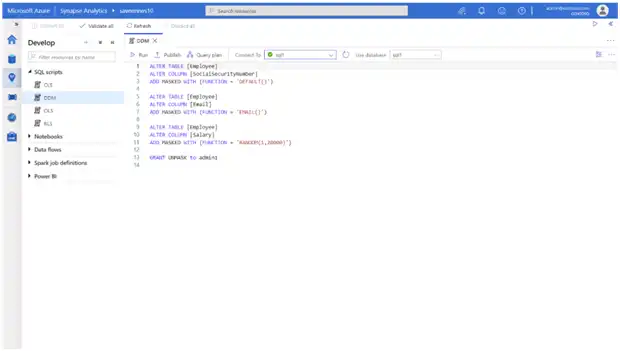In a world where data drives every strategic decision, organizations need more than just isolated tools-they need a unified data platform. Traditionally, businesses have relied on two separate systems:
> Data Warehouses for tracking business performance
> Data Lakes for capturing operational insights and exploring the unknown
While both are essential, they often operate in silos, leading to conflicting reports and inefficiencies. This is where Azure Synapse Analytics delivers game-changing value-bringing data together for a single version of the truth.
What Is Azure Synapse Analytics?
Azure Synapse Analytics is Microsoft’s integrated cloud platform that combines enterprise data warehousing and big data analytics in a single, streamlined solution. It breaks down data silos by enabling ingestion, preparation, management, and analysis from one unified interface.
By connecting with Power BI and Azure Machine Learning, Synapse empowers users to derive insights faster, collaborate across departments, and deploy AI at scale.

Key Features of Azure Synapse Analytics
1. Scalability at Its Core
Built on Azure’s serverless architecture, Synapse handles queries across petabyte-scale data-structured or unstructured. It supports both SQL and Spark, enabling teams to query any data using familiar tools without managing infrastructure.
2. Unified Analytics Workspace
With Azure Synapse Studio, all stakeholders-engineers, analysts, and data scientists-can work within a shared, code-free workspace. Users can:
> Build data pipelines using Azure Data Factory
> Develop and train models in notebooks
> Create dashboards with Power BI
This collaboration eliminates handoff delays and improves time-to-insight.

3. Intelligent Integration with Power BI and Azure ML
Deep integration with Power BI and Azure ML allows users to not only explore and visualize their data but also enhance it with predictive analytics. It supports full-cycle machine learning within a single ecosystem.
4. Enterprise-Grade Security
Azure leads in security and compliance. With always-on encryption, fine-grained access control, and compliance certifications, Synapse ensures your data remains protected both at rest and in transit.

Who Benefits from Azure Synapse Analytics?
> Data Engineers: Build scalable pipelines without coding
> Data Scientists: Use integrated notebooks for advanced modeling
> Business Analysts: Create real-time dashboards from a single source of data
IT Leaders: Deliver secure, compliant, and agile infrastructure
As Gartner highlights in its top trends in data and analytics, the shift toward integrated platforms like Azure Synapse Analytics is transforming how organizations derive value from data.
Conclusion: A True Data Transformation Catalyst
Azure Synapse Analytics is more than just a tool-it’s a strategic enabler. It empowers organizations to bridge the gap between operational insights and executive decision-making. By unifying your data environment, it unlocks a future of agility, scalability, and innovation.
FAQs
What is Azure Synapse Analytics used for?
Azure Synapse Analytics is a cloud-based data integration and analytics platform by Microsoft. It enables businesses to ingest, prepare, manage, and serve data for immediate business intelligence and machine learning needs - all from a single unified environment.
How does Azure Synapse integrate with Power BI?
Azure Synapse offers built-in integration with Power BI, allowing users to seamlessly visualize data stored in Synapse workspaces. You can publish datasets directly to Power BI and build interactive dashboards using real-time data from your Synapse SQL pools or data lake.
What are the benefits of using Azure Synapse for data-driven organizations?
Key benefits include unified data management, advanced analytics with Spark or T-SQL, real-time insights, scalability, and seamless integration with Azure services like Power BI, Data Lake, and Azure Machine Learning - empowering faster, more informed decision-making.
Is Azure Synapse suitable for small to medium-sized businesses?
Yes, Azure Synapse offers scalable pricing models and modular services, making it accessible for small and medium businesses (SMBs) that want enterprise-grade analytics capabilities without a heavy infrastructure investment.



